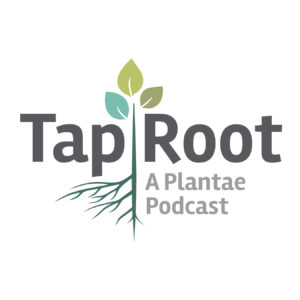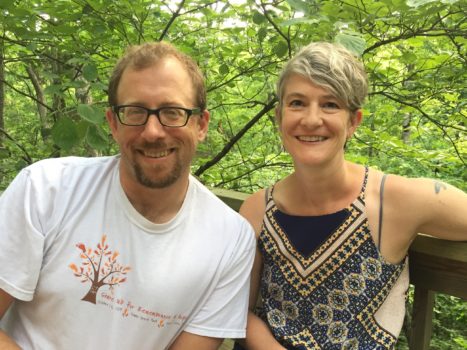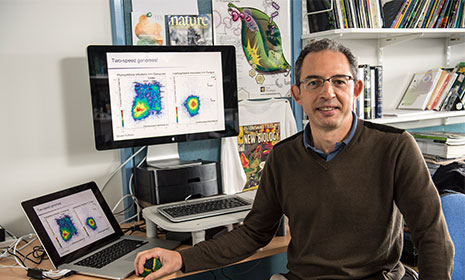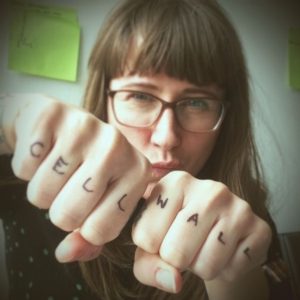In February 2016, news surfaced that parts of Bangladesh were suffering from a severe outbreak of wheat rust, a fungal disease of grasses that had never before been seen in Asia. Seed farms and badly infected fields were burned with gasoline in a desperate attempt to prevent the disease from reaching major wheat-producing areas in neighboring countries.

Hearing of the outbreak, Sophien Kamoun, a Tunisian scientist working in England who had been waiting for an opportunity to test a rapid response plan for emerging plant disease, teamed up with Tofazzi Islam, a Bangladeshi scientist, to try to identify the strain of fungus infecting the fields.
Instead of culturing the pathogen and sequencing its DNA, which might have taken years of effort, the scientists sequenced RNA from infected leaves gathered in the fields. They had an answer in six weeks. The pathogen was not a new strain or a mix of strains but rather an asexual clone closely related to one found in Brazil. It had probably been introduced to Asia from South America by global transport.
The article they eventually published in the journal BMC Biology tells you this much. But the rest of the story — the backstory — is told in the first episode of a new podcast called Taproot sponsored by Plantae, an online community of plant scientists. If you miss that, you’re missing the really juicy bits of the story.

Co-hosted by Elizabeth Haswell, associate professor of biology in Arts & Sciences at Washington University in St. Louis, and Ivan Baxter, a USDA research scientist and associate member of the Danforth Plant Science Center, Taproot is a series of conversations that go behind the the curtain to reveal what it was really like to do the work so tersely described in a journal.
In short, they give the biology room to breathe. As in: So what is the backstory to Kamoun’s research? He was able to identify the pathogen so quickly by practicing “extreme” open science, Haswell said. “People say open science, and often they just mean publishing your article in an open science journal that doesn’t have a paywall so anyone can read it. But Sophien took it so much farther.”
Kamoun heard about the outbreak from the Bangladeshi press and contacted Islam, a Facebook friend, to suggest a collaboration. Islam’s students went to the field and collected samples of diseased leaves, gathered the RNA the fungus was expressing and shipped it to Kamoun’s lab in Norwich, England, where the RNA was sequenced.

“Once we had the sequences, we couldn’t do much with them because I work on potato blight, not wheat rust,” Kamoun said. “So we posted our sequences on a website called Open Wheat Blast and tweeted and emailed colleagues to let them know it was there and to ask them to help us analyze the data.
“The response was fantastic,” he said. “The day we went live there was only one public sequence of the wheat blast strain from a group in Montpellier, France. But, within weeks, 22 additional genomes had been posted.”
Two population geneticists independently analyzed these sequences and within six weeks of the sample collection their reports were posted on Open Wheat Blast. Both concluded that the Bangladeshi strain was a single clone and closely related to a South American genotype. All 31 participants in this remarkable exercise in scientific crowdsourcing then became authors on the BMC Biology paper.
Listening to Kamoun talking on the podcast with Haswell and Baxter is a bit like eavesdropping on the conversation at the next table over at the bar. You feel like you’re getting the inside story, the real dope, the stuff scientists say to one another when they know they are talking to people who will understand what they say the way it is meant.
Busting out a podcast
Asked why they chose the conversational tone, Haswell said they both listened to a lot of podcasts where half the show is banter. (She likes the Simple Show and the Pop Cast.) “We wanted that tone for our podcast because it’s more fun to listen to,” she said. “That’s also why Ivan is such a great co-host. I’ve known him a long time, and I knew we could joke around with one another.”
But she didn’t actually get serious about hosting a podcast until she went on sabbatical last year. “I wrote, I did research, but I also had a lot of time to reflect,” she said. “Among other things, I realized I was tried of just being a consumer of podcasts and other media. I wanted to be a producer, too.
“I tried out different configurations for how the podcast could go, but then I got back to St. Louis and I had a million things to do and I kind of forgot about it,” she said. Then the editor of The Plant Cell, a journal for which Haswell is a reviewing editor, asked her whether she would like to do an online journal club. The idea was that she would pick a paper, and then walk through the paper with its author on video.
“I wasn’t interested in that idea,” Haswell said. ” I didn’t want to do a journal club, and I didn’t want to be on video. But I did want to do a podcast.
“So over that weekend, Ivan and I came up with a proposal. We just started talking about how a paper reveals only a tiny bit of what went on in the lab or the field. We thought that it’s important for junior scientists to know some of the other stories, and that a podcast might be a way to tell them.”
Haswell ran the idea by her cousin Anne Strainchamps, who co-founded the radio show “To the Best of Our Knowledge.” (“I come from a family of storytellers,” Haswell said.) The idea was new to Strainchamps, which gave Haswell the courage to run with it.
She and Baxter emailed 30 dynamic people they knew and told them they were starting a podcast where they would use journal articles as a lens to look at the process of doing science. The first six people who wrote back are the six in the first season of Taproot.
“And then it was like crunch time,” Haswell said. “We did all the interviews in May and June, and since then we’ve been editing and posting one podcast a week.” Helping out are Plantae staff Melanie Binder, Susan Cato, Mary Williams and Tasmin Boufelfel. They maintain the Taproot website, do the editing, created the logo, and upload each completed episode to iTunes and Stitcher.
Give a listen
If you’d like to give Taproot a listen, try the current episode. In this episode, Siobhan Braybrook describes using atomic force microscopy (AFM) to measure changes in the elasticity of plant cell walls that happen during growth. Again, as in Kaman’s case, there is a terrific backstory to a project that sounds like one only a specialist could love.

The reason is that nobody had ever applied AFM to plant tissues before, and the plant community was skeptical. “When I presented the data within the research group,” Braybrook said, “I was challenged a lot about the validity of what we were doing, the validity of the interpretations, if any interpretations could be made. And that was really difficult for me because its not often that you get something so in your face, I guess, you get that challenge right in your face.
“In the end it was incredibly useful. It made me ask questions to myself: ‘Well, how do I believe this, why do I believe this, do I need to do more controls to really understand it?’ And I think taking those criticisms not as criticisms of myself but as really positive probes that would strengthen my methods, strengthen my interpretations, and allow me to ask the questions I wanted to be able to ask with confidence was something I had to learn. . . . Because originally I just cried.”
In the recording everyone laughs — not because they’re mean but because they’ve been there — and there follows a conversation about the difficulty of knowing when you know something, much less convincing reviewers that you do, that goes right to the heart of the scientific endeavor.
Sometimes it is only in bars that we tell the whole truth.